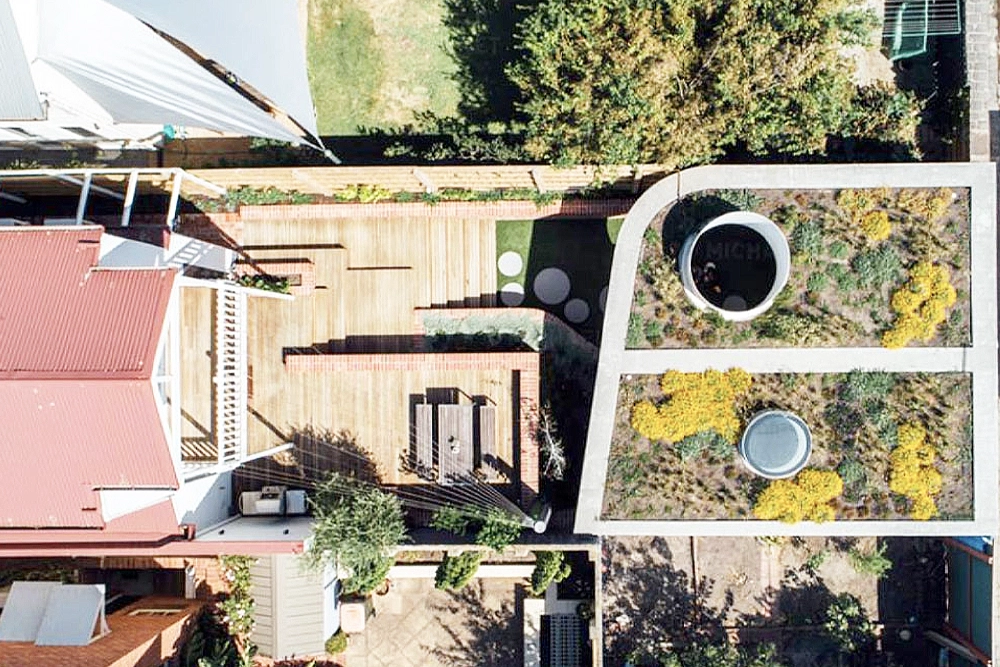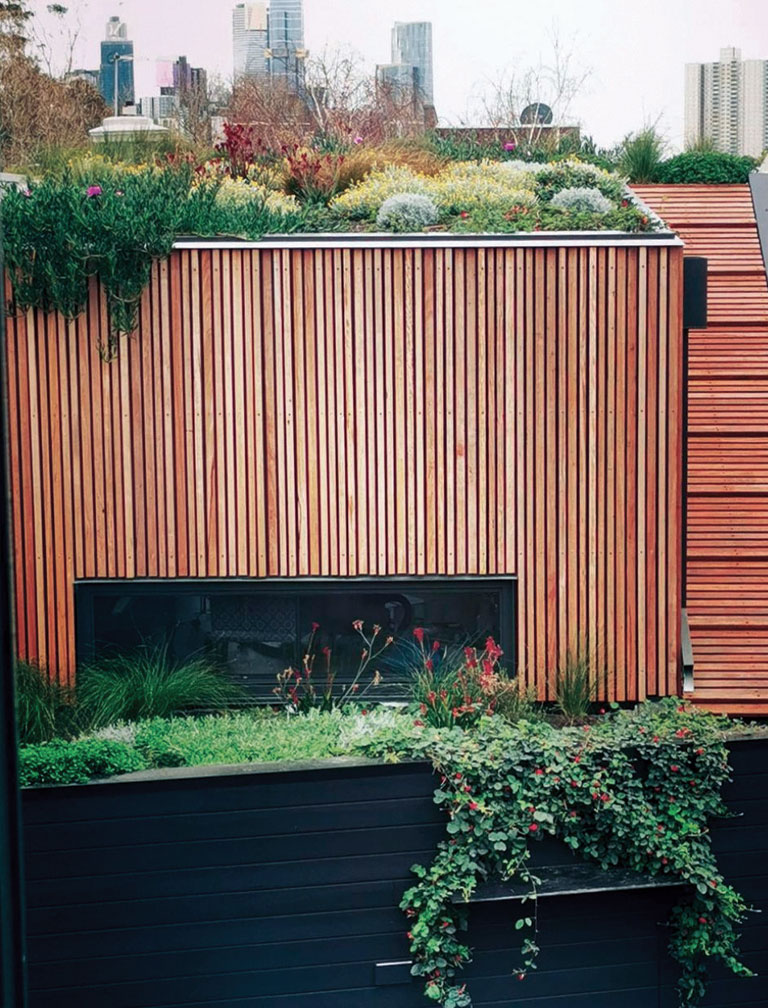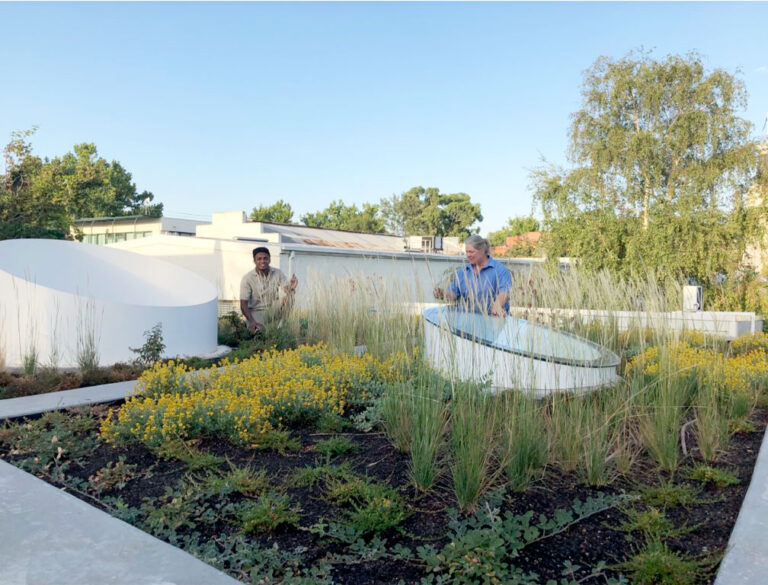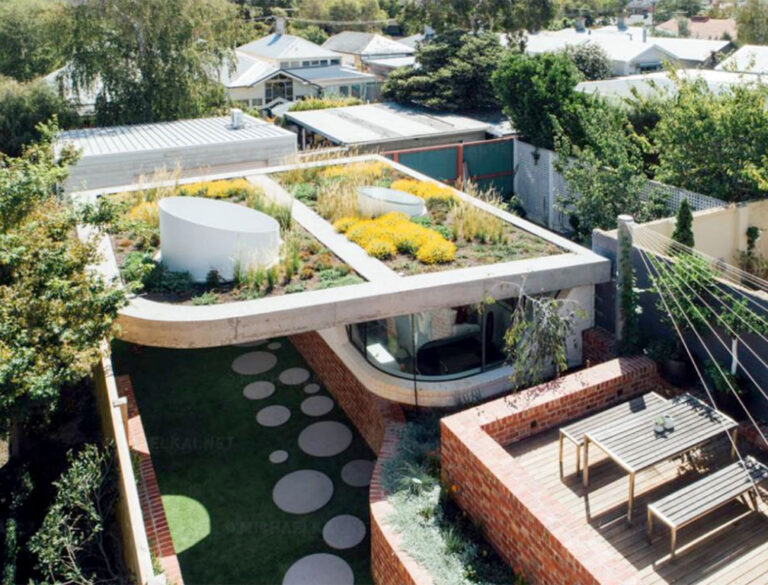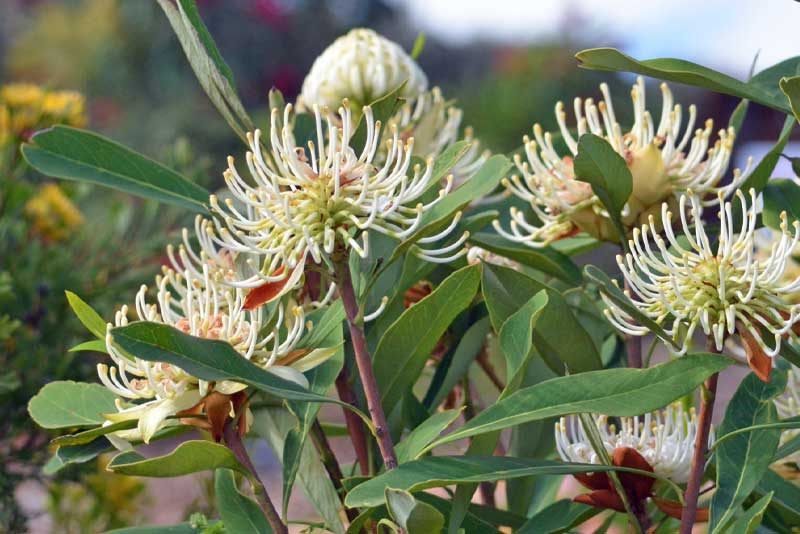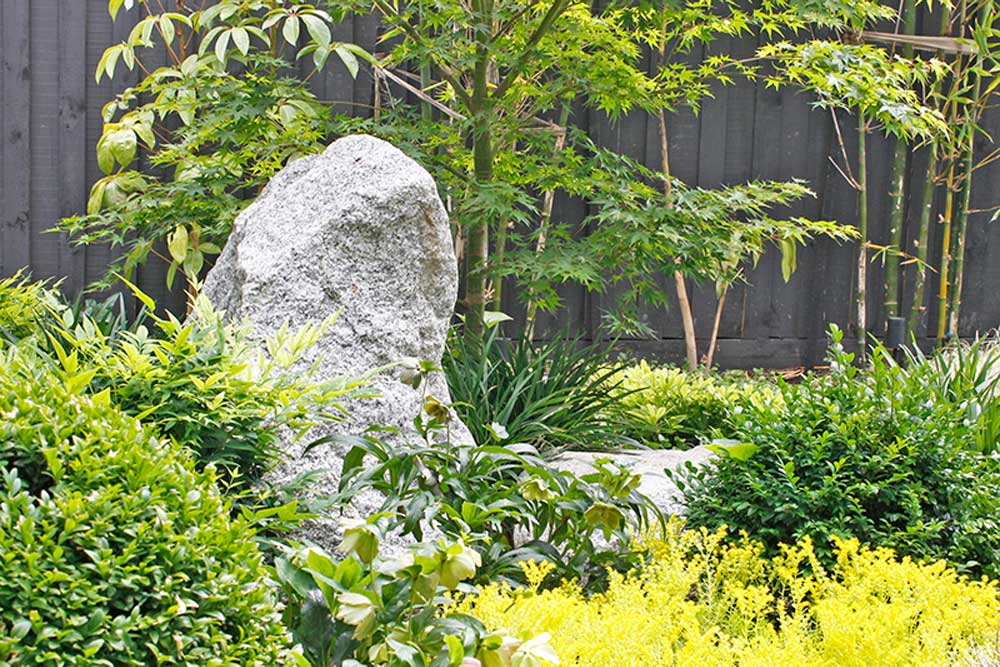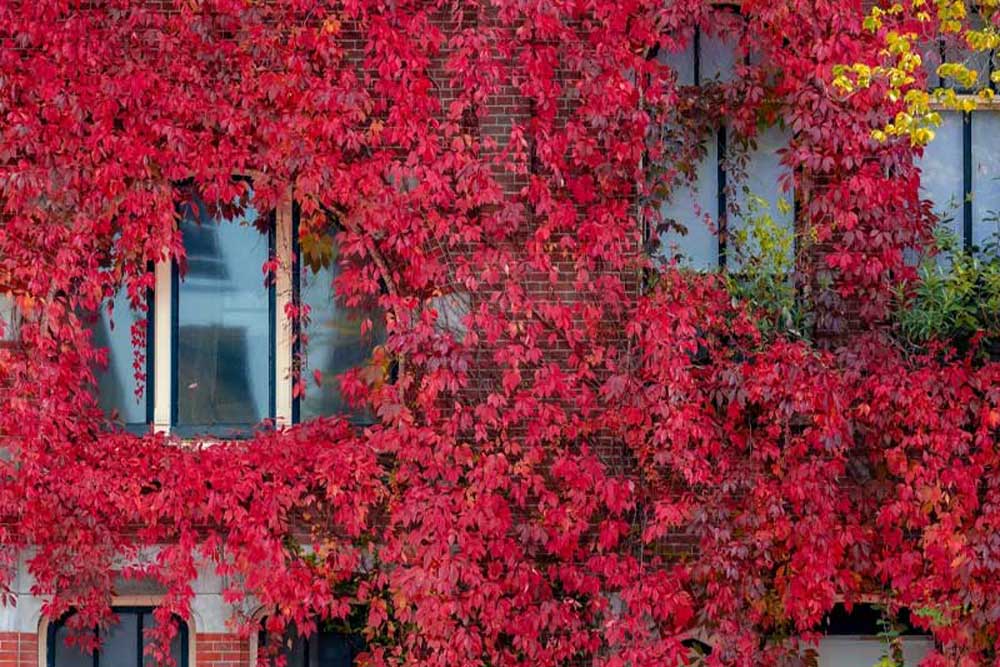Building a green roof in Australia offers more than just visual appeal; it provides significant benefits for both the environment and urban living. As green spaces in cities continue to decline, understanding why you should consider a green roof garden becomes increasingly important. Green roofs are becoming popular for their ability to improve air quality, enhance energy efficiency, and offer other valuable advantages. Below, you’ll find key benefits of installing a green roof and important considerations to keep in mind before proceeding.
Benefits of installing a green roof:
Energy Efficiency
Green roofs insulate buildings and regulate temperatures, which help mitigate the urban heat island effect. This insulation leads to lower energy costs and reduced reliance on air conditioning during warmer months, which helps decrease a building’s carbon footprint.
Improves air quality
Green roof gardens naturally purify the air by filtering pollutants and releasing oxygen. This process improves air quality in urban areas, creating a healthier environment.
Reduce stormwater runoff
Green roofs can effectively reduce and slow stormwater runoff by retaining plant water. Green roof gardens also help filter pollutants, such as nitrogen, from rainfall, further benefiting the environment.
Wildlife
Green roof gardens enhance the urban landscape and provide valuable habitats for wildlife. Urban development often disrupts natural habitats, but green roofs can help mitigate this by offering new homes for birds, bees, butterflies, and other pollinators. These gardens supply native species with essential food sources.
Natural Aesthetic
Green roofs improve the visual appeal of urban areas by adding greenery to otherwise concrete-dominated landscapes. They transform rooftops into visually pleasing natural spaces that enhance the overall look of buildings and their surroundings.
Considerations when installing a green roof:
When planning to build a green roof garden, there are several critical factors to consider to ensure its success and sustainability. From assessing the physical requirements of the space to adhering to safety and building codes. Below are the key considerations and requirements to keep in mind as you take on this green project.
Requirements
- Size: Assess the available space to determine the scope and design of your green roof garden.
- Light: Evaluate the amount of sunlight the roof receives to choose appropriate plants.
- Water: Consider the water supply and irrigation system needed to maintain the garden.
- Elevation: Account for the height of the building and its impact on garden design.
- Soil: Select soil that suits the plants you intend to grow and ensure it’s compatible with the roof structure.
- Plants: Choose plants that thrive in the local climate and are suitable for rooftop conditions.
- Planting and Maintenance: Plan for planting methods and ongoing maintenance to ensure the garden’s health and longevity.
- Budget: Estimate the costs for materials, installation, and maintenance to ensure the project aligns with your financial resources.
Special Considerations
- Safety: Ensure the garden design incorporates safety measures for both the structure and its users.
- Building Codes: Adhere to local building codes and regulations to ensure compliance.
- Professional Assistance: Consult a professional to address design, installation, and structural concerns.
- Slope: Manage the roof’s slope to facilitate proper drainage and plant growth.
- Structural Load Capacity: Verify that the roof can support the additional weight of the garden, including soil, plants, and water.
- Drainage System, Waterproofing, Electrical and Water Supply: Implement a reliable drainage system, waterproofing measures, and plan for any necessary electrical and water supply installations.
Best plants for green roofs in Australia
Choosing the right plants for green roofs in Australia involves selecting species that can thrive in the specific climate and conditions of rooftop environments. Here are some of the best Australian Native plants for green roofs:
Kangaroo paw Anigozanthos spp Known for its striking, unique flowers and ability to withstand dry conditions.
Cushion bush Leucophyta brownii: A drought-tolerant shrub with attractive, silvery foliage that thrives in well-drained soil.
Native daisy Brachyscome multifida: A low-growing shrub that produces an abundance of daisy-like flowers on slender stems.
Pigface Carpobrotus spp: A succulent with vibrant flowers and trailing growth, ideal for ground cover.
Morning iris Orthrosanthus multiflorus: Is a grass-like clumping plant that produces delicate blue flowers.
Fan flower Scaevola aemula: A hardy plant with attractive flowers that bloom for many months, making it suitable for a range of soil types and conditions.
Yellow Button Chrysocephalum semipapposum: A tough, low-growing plant with bright yellow flowers that can handle harsh conditions.
Running postman Kennedia prostrata: A prostrate or twining shrub with red pea flowers, ideal for creating an attractive ground cover that spreads across a rooftop garden.
When selecting plants, consider factors such as the roof’s exposure to sun and wind, irrigation systems, and the overall weight capacity. Native and drought-tolerant plants are typically the best choices for ensuring a successful and sustainable green roof.
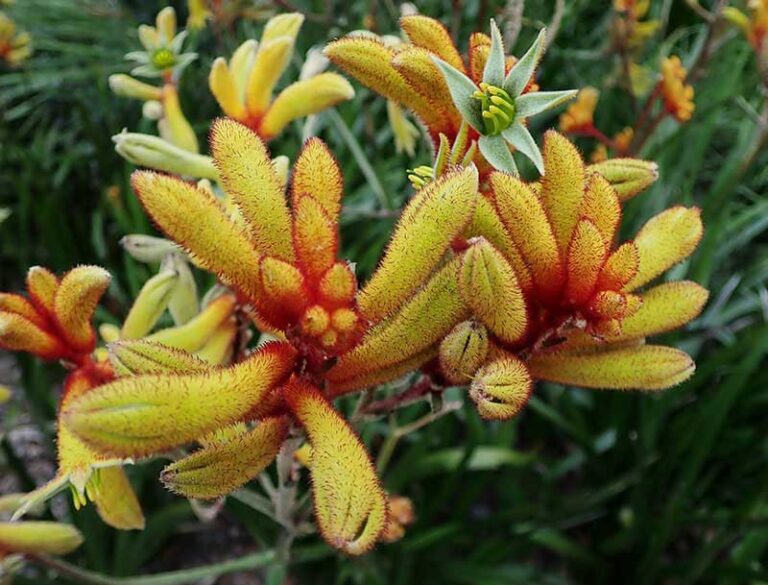
A green roof garden offers a sustainable and appealing solution for urban spaces, enhancing energy efficiency, air quality, stormwater management, and wildlife support. Planning and professional guidance are essential for safety, compliance, and garden health. With thoughtful plant choices and careful preparation, a green roof can transform an unused space into a vibrant natural habitat that benefits both buildings and the urban environment.
Cover image: Camberwell Green Roof Project. Credit: Michael Kai

